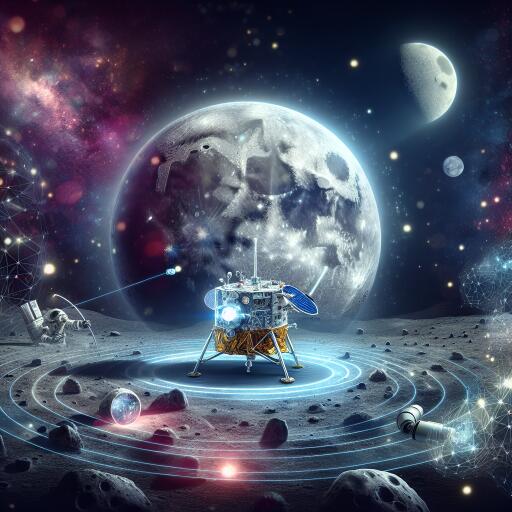
China’s Lunar Mission Poised to Unravel Mysteries of the Solar System’s Dawn
In a groundbreaking leap for space exploration, China’s Chang’e-6 lunar probe is on the brink of igniting a new understanding of the solar system’s early days. This ambitious mission, drawing its name from the legendary Chinese moon goddess, embarked on a historic journey from Hainan Island, marking a significant moment in humanity’s lunar exploration.
The Chang’e-6 spacecraft made a triumphant landing within the immense South-Pole Aitken Basin, a site on the moon’s far side that has remained untouched and shrouded in mystery. This part of the moon, invisible from Earth, presents an invaluable window into the solar system’s tumultuous formation period.
China’s lunar exploration efforts reignited the global chase for moon samples when its predecessor, the Chang’e-5 mission, successfully returned samples from the moon’s near side in December 2020. This achievement concluded a 44-year hiatus in lunar material retrieval, previously led by the former Soviet Union’s Luna 24 mission and the series of Apollo missions between 1969 and 1972.
The unique aspect of the Chang’e-6 mission lies in its targeted site. The lunar far side’s South-Pole Aitken Basin is believed to be the result of a colossal impact event that significantly affected the solar system, Earth, and the moon itself. Though the near-side samples provided by Apollo missions hinted at such an era of cataclysmic bombardments, the precise nature and timing of these events remain a topic of scientific debate. Securing samples from this less-explored basin could therefore cement our understanding of these critical moments in cosmic history.
In a race against time, the Chang’e-6 had a mere 14-hour window post-landing to drill, collect, and secure approximately 2kg of lunar soil and rock. This mission aims to be the first to return such precious material from the moon’s far side and overcome the challenging conditions encountered by its predecessor, Chang’e-5, which faced difficulties due to unexpectedly tough subsurface layers.
Upon completing the sample collection, these lunar treasures will be carefully packed into a rocket booster atop the lander. This module will then ascend from the lunar surface to dock with an orbiter, which will carry the samples back to Earth for a landing anticipated in Inner Mongolia around June 25.
The Chang’e-6 mission not only showcases China’s advancing capabilities in space exploration but also underlines the potential for international cooperation in the quest for knowledge beyond our planet. The inclusion of payloads from Italian, French, and Pakistani research institutes, along with the European Space Agency, within the mission’s framework emphasizes a growing global collaboration in space science.
Europe’s active involvement and shared enthusiasm for analyzing Chang’e-5’s lunar samples spotlight the potential for continued and deepening cooperation in studying the materials brought back by Chang’e-6. Such collaboration not only propels our quest for cosmic understanding forward but also demonstrates the unifying power of space exploration in bringing together international expertise and curiosity.
As we await the return of Chang’e-6 and its potentially revolutionary findings, it’s clear that this mission could redefine our understanding of the solar system’s origins. By extending humanity’s reach to the uncharted far side of the moon, China’s latest lunar expedition may well answer longstanding questions about our place in the cosmos, setting the stage for the next epoch of interstellar discovery.





Leave a Reply